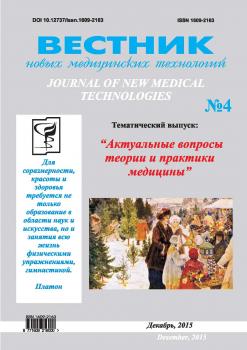Provision of high efficiency and quality of drugs developed on the basis of nanotechnology is possible only under the requirements for the development, research, production and introduction of new pharmacological agents. Determination of genotoxicity and cytotoxicity is the first stage of toxicological studies of newly synthetized substances, the aim of which is to determine the ability to induce primary DNA and cell cultures damages. Such studies provide information about primary toxic effects of substances and constitute a basis for confirming the safety of new drugs. Considering a constant need for the introduction of new antimicrobial agents for treatment of intestinal infections, it is expedient to develop combinative drugs which will have better efficacy and safety. Significant scientific and practical interest has study of drugs based on nanosilver, which is active against antibiotic-resistant microorganisms. By the Department of Pharmacology and Clinical Pharmacology of Bogomoletz National Medical University and Chuiko Institute of Surface Chemistry NAS of Ukraine was specifically designed and synthesized nanocomposite highly dispersed silica with silver nanoparticles, which is considered as a promising drug with a complex of antibacterial and sorption-detoxication properties. The purpose of this work is to study the cytotoxicity and genotoxicity of nanocomposite highly dispersed silica with silver nanoparticles. The degree of DNA damage by nanocomposite was studied by alkaline gel electrophoresis of isolated cell test culture CHO-Kl. Investigation of cytotoxicity was carried out on passaged eukaryotic cell culture of human epidermoid carcinoma larynx (Hep-2). It is shown that nanocomposite highly dispersed silica with silver nanoparticles does not have genotoxic properties, and its cytotoxicity disappears at concentrations below 0,007%.
silver nanoparticles, silica, nanocomposite, genotoxicity, cytotoxicity
Нанобиотехнология - современное направление исследований, которое занимает особое место в научно-практической деятельности человека. В последние годы это направление переживает особенно бурное развитие. В значительной степени достижения нанобиотехнологии сказались на развитии медицины и ветеринарии, где наномате-риалы получили широкое применение в лечении и диагностике заболеваний различной этиологии, а также как средства целевой доставки лекарственных средств [3,6].
Перспективными в этом аспекте являются наночастицы металлов (НЧМ) [3,5,6]. НЧМ имеют особые физико-химические свойства и биологическое воздействие, по сравнению с веществами в обычном физико-химическом состоянии, поэтому их следует отнести к новым видам материалов, характеристика потенциального риска которых для здоровья человека и состояния окружающей среды во всех случаях является обязательной.
На сегодняшний день одной из наиболее активно ис-
1. Chekman IS. Nanofarmakologiya: eksperimental´-no-klinicheskiy aspekt. Vrachebnoe delo. 2008;3-4:104-9. Russian.
2. Caruthers SD, Wickline SA, Lanza GM. Nanotechnological applications in medicine. Cur. Opin. Biotechnol. 2007; 18(l):26-30.
3. Castellano JJ, Shafii SM, Ко F, Donate G, Wright ТЕ, Mannari RJ, Payne WG, Smith DJ, Robson MC. Comparative evaluation of silver-containing antimicrobial dressings and drugs. Int Wound J. 2007;4(2):114-22.
4. Hong B, Kai J, Ren Y, Han J, Zou Z, Ahn CH, Kang KA. Highly sensitive rapid, reliable, and automatic cardiovascular disease diagnosis with nanoparticle fluorescence enhancer and mems. Adv Exp Med Biol. 2008;614:265-73.
5. Medina C, Santos-Martinez MJ, Radomski A, Corrigan OI, Radomski MW. Nanoparticles: pharmacological and toxico-logical significance. Brit. J. Pharmacol. 2007;150:552-8.
6. Panacek A, Kvitek L, Prucek R, Kolar M, Vecerova R, Pizurova N, Sharma VK, Nevrcna TJ, Zboril R. Silver colloid nanoparticles: synthesis, characterization, and their antibacterial activity. J Phys Chem B. 2006;110(33):16248-53.
7. Papageorgiou I, Brown C, Schins R, Singh S, Newson R, Davis S, Fisher J, Ingham E, Case CP. The effect of nano- and micron-sized particles of cobalt-chromium alloy on human fibroblasts in vitro. Biomaterials. 2007;28(19):2946-58.
8. Wang MD, Shin DM, Simons JW Simons, Nie S. Nano-technology for targeted cancer therapy. Exp. Rev. Anticancer Ther. 2007;7(6):833-37.





